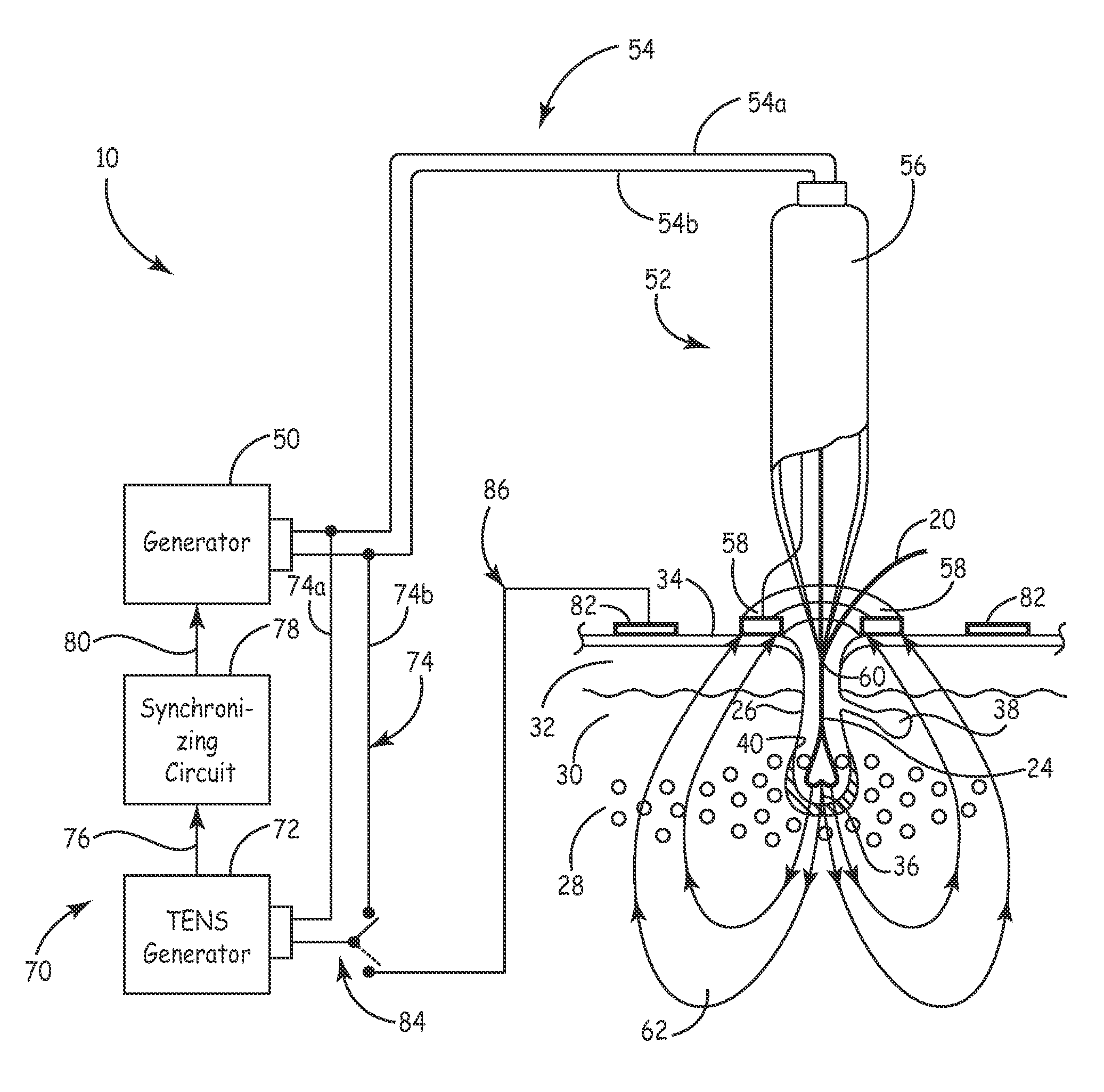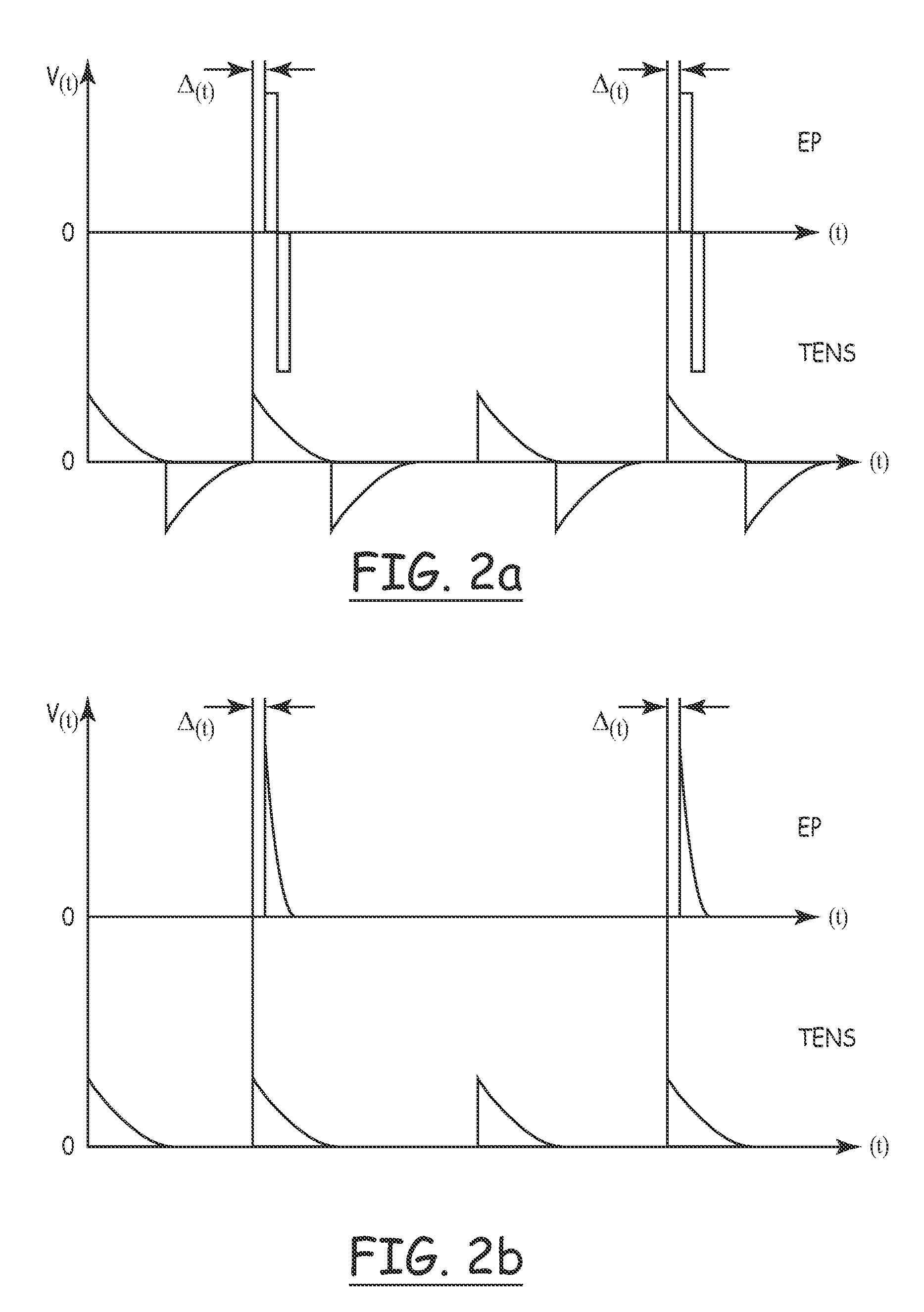Apparatus and method for hair removal by electroporation
a technology of electroporation and apparatus, applied in the field of electric apparatuses, can solve the problems of low reliability factor of thermolysis when used on heavy hair, narrow heating pattern, and pain in direct current electrolysis for patients, and achieve the effect of a larger area of coverag
- Summary
- Abstract
- Description
- Claims
- Application Information
AI Technical Summary
Benefits of technology
Problems solved by technology
Method used
Image
Examples
Embodiment Construction
[0033]To understand the present invention and its operation in the removal of hair, a minimal understanding of the physical structure of the skin and structure surrounding the hair is desirable. Thus, referring to FIG. 1, an exemplary embodiment of an electroporating hair removal apparatus 10 in accord with the present invention is shown in an operative placement relative generally to a patient and more specifically to a hair 20 of the patient whose removal is desired.
[0034]Generally speaking, hair 20 includes a hair shaft 20 and a root 24. Hair 20 grows from a hair follicle 26, which extends from subcutaneous fat layer 28, through the dermis 30, the epidermis 32 and the outer surface layer of the skin, the stratum corneum, 34. The follicle 26 includes a bulb 36 from which the hair 20 grows and a sebaceous gland 38 that provides oil to lubricate the hair and skin.
[0035]Hair removal in accord with the present invention is accomplished by the application of an electroporating electric...
PUM
 Login to View More
Login to View More Abstract
Description
Claims
Application Information
 Login to View More
Login to View More - R&D
- Intellectual Property
- Life Sciences
- Materials
- Tech Scout
- Unparalleled Data Quality
- Higher Quality Content
- 60% Fewer Hallucinations
Browse by: Latest US Patents, China's latest patents, Technical Efficacy Thesaurus, Application Domain, Technology Topic, Popular Technical Reports.
© 2025 PatSnap. All rights reserved.Legal|Privacy policy|Modern Slavery Act Transparency Statement|Sitemap|About US| Contact US: help@patsnap.com



